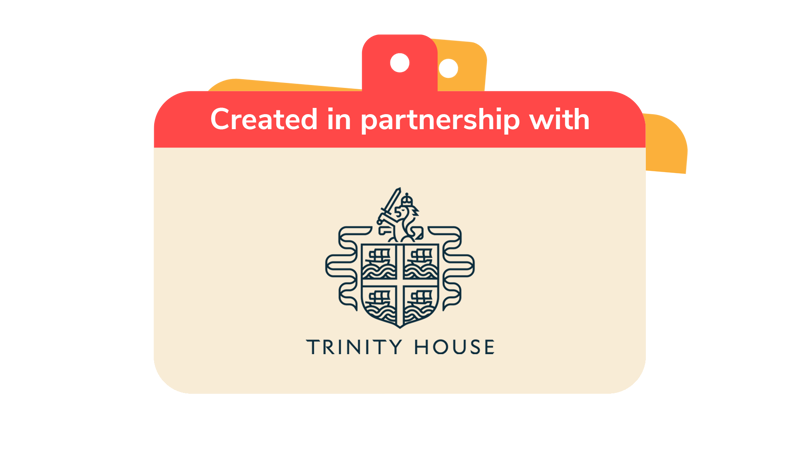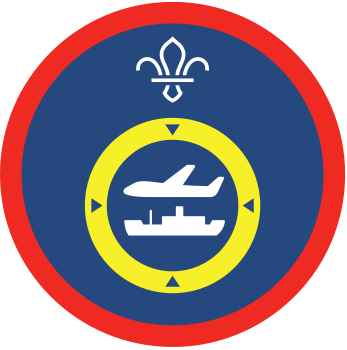
Mariners’ maps and mishaps
You’ll need
- Pens or pencils
- Tables
- Chairs
- Scrap paper
- Big sheets of paper
- Nautical charts
- Parallel plotters
- Dividers
- The depth of water at sea varies a lot depending on the tide. The depths you see on nautical charts don’t represent the tide at any given time.
- Instead, they generally refer to the lowest depth you’d expect the tide to fall in a given area. This is known as the lowest astronomical tide, or LAT.
- On UK charts, the chart datum will be in metres. This isn’t always the case with international charts so it’s worth checking.
- Charts from around the world mostly share the same symbols. The colours they use vary slightly. Different colours represent land, tidal zones, shallow water and deep water.
- The most common charts in the UK are Admiralty or Imray.
- The UK Hydrographic Office publishes the book Symbols and Abbreviations used on Admiralty Charts (often referred to as Chart 5011), which lists all the symbols you’ll need to know. At least one copy of Chart 5011 would be useful for the group if they’ll be using Admiralty nautical charts. The Royal Yachting Association have copies for sale in their online shop, but see if you can get a second hand copy or borrow one first.
- You can find guides to the symbols and abbreviations used on Imray charts online.
Before you begin
- You could use a whiteboard and projector instead of a big sheet of paper.
- Ask everyone to research a story of a famous ocean voyage ‘gone wrong’ – where explorers ended up somewhere unexpected or failed to complete their journey. These don’t have to be stories of British ships or grand missions. The more variety the better.
- Source nautical charts that cover some of the geographical locations from the stories. Find enough charts so that small groups can share one. Open Sea Map is a free online nautical chart.
- Familiarise yourself with marine chart plotting. Take a look at How to plot a navigation course on a nautical chart without GPS for a step-by-step guide.
- You may decide you need the help of an expert guest to deliver this session.
- Research local people who are knowledgeable about maritime history. You could ask group members, people from your local museum, historical maritime archives, Sea Scouts, or a suitable National Scout Active Support Unit.
- Invite someone along to your usual meeting place as a guest.
- Ask the guest about their area of maritime interest, and let them know your plans for the session.
- Give the guest plenty of notice before the session. Check if they need information about access or transport.
- Check in a couple of days before the session that they’re still going to join you. See if they are bringing anything with them, or whether you should provide anything – big sheets of paper and pens (or a whiteboard and projector) may help in the teaching part of the activity.
- During the session, introduce the visitor to the group and perhaps ask a few young people to prepare some questions to ask the visitor.
Telling tales
- Everyone should share the stories they have researched. If people have looked into the same stories, they could pair up or split into small groups.
- Everyone should use the charts to help people see where the voyages took place and went wrong.
- Everyone should take turns telling stories and asking questions.
Chart a historic voyage
- The person leading the activity should explain how to plot a marine voyage on a chart.
- Everyone should split into small groups and sit down with scrap paper and pencils, a nautical chart, parallel plotters and dividers.
- Using the nautical charts, each group should familiarise themselves with the common symbols and chart datum. This may vary slightly from map to map.
- Each small group should plot at least part of the historic journeys they researched. Routes can be tracked in as little or as much detail as each group is interested in mapping.
- Each small group should talk about some of the challenges involved in plotting historic journeys. How much have the oceans have changed since these voyages were made? How many land masses were unidentified? Details recorded on charts change all the time. This exercise will show everyone the importance of up-to-date maps.
- Everyone should gather together in a big group once more. Talk about how advancements in navigation technology can help us avoid some of the mishaps made before. Are mariners still making big navigation mistakes?
Reflection
This activity was about trying new things. Learning some of the finer details of chart plotting can be tricky. Everyone should take time to reflect on the ways they learn best. This way, when it comes to approaching the next new challenge, they can say what works for them.
This activity was also about learning to communicate. Storytelling can be a fun way to learn from the mistakes of those who came before us, and can be an interesting format for introducing everyone to a new topic. Everyone should think about whether the storytelling format worked for them. Did the environment encourage sensitive communication and active listening? Did anyone notice any components of good storytelling?
Safety
All activities must be safely managed. You must complete a thorough risk assessment and take appropriate steps to reduce risk. Use the safety checklist to help you plan and risk assess your activity. Always get approval for the activity, and have suitable supervision and an InTouch process.
Make it more challenging by asking everyone to make more precise measurements so they can describe the journeys in greater detail.
- Map work can be modified to make it more tactile. Consider tacking old maps or photocopies up on cork boards and using pins and string to plot the tracks.
- If the detail on your maps is very small, try using magnifying glasses. Online map reading makes it easier to zoom in on finer details.
All Scout activities should be inclusive and accessible.
